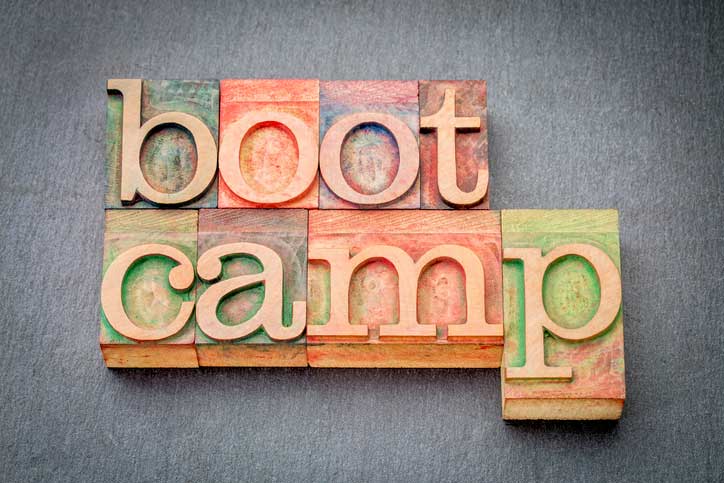Planning a nonprofit board retreat may sound like a huge undertaking, but it is a vital component of managing a board of directors.
Since it is often difficult to get all members in a room at once, nonprofit board retreats provide a unique opportunity to connect and build relationships among members. Because a nonprofit board retreat is an annual event, members are likely to shuffle their schedules to attend.
The Purpose of a Board Retreat
There are several purposes of a nonprofit board retreat, and they touch on both the formal governance of the organization and the informal atmosphere of the board.
Setting an Agenda
A nonprofit board retreat is an excellent opportunity to hunker down and get some serious work done. If your board has been struggling with setting agendas, meeting goals, or executing strategy sessions, a nonprofit board retreat is the perfect setting to make these things happen.
Since nonprofit board retreats are usually held off-site, away from distractions and day-to-day obligations, they provide the time and space needed to focus and provide effective results. A board retreat is a good place to discuss a strategy for starting an endowment or to throw around ideas about how to handle generational wealth transfer.
Networking
Getting all of your board members in the same space for a sustained period of time is an excellent way to encourage networking. While the organization’s more frequent meetings may be short, with people often rushing in and out as they deal with their everyday lives, nonprofit board retreats create a relaxed setting that promotes communication.
Since the atmosphere of a nonprofit board retreat is much more casual, you may find that board members are more likely to form genuine connections, as opposed to the stiffer interactions you may see at a more formal meeting.
Team Building
The opportunity for team building that a nonprofit board retreat provides cannot be overstated. If you have members who are frequently opposed to each other’s opinions and are sometimes difficult to interact with, a nonprofit board retreat can be the reprieve needed to help them get on the same page.
Establishing team relationships can help improve synergy among board members and can help improve situations where groupthink may occur.
Culture
Developing a positive culture among staff and board members is important. Since staff sometimes attend nonprofit board retreats, this is a logical place to model the type of relationship you would like between the organization’s board members and staff.
If the board and staff do not know each other well, or if the staff is struggling with morale, board members may be able to step in and diffuse the situation by shifting cultural expectations. Those in leadership positions set the tone of the organization’s culture, and in a situation like this, they should model examples of its expectations.
Acknowledgment
A nonprofit board retreat is a perfect time to celebrate success. If your organization has met fundraising goals or has had a big “win,” it is appropriate to acknowledge the time and hard work that went into that achievement.
Planning a nonprofit board retreat at a time that coincides with a celebration is fantastic timing and allows the event to be a moment of renewal for the group.
Benefits of a Board Retreat
Nonprofit board retreats provide a unique experience for organizations. It is a rare event to gather all board members and staff together in a more social setting.
A board retreat opens the door for external facilitation, which can usher in new perspectives and ideas. Take advantage of this situation to provide access to guest speakers, strategy sessions, and training. If you host guest speakers, staff and board members can split into breakout groups to receive information that is applicable to their particular roles.
This is also a great time to brainstorm for future programming ideas, bounce ideas off of each other, and discuss fundraising options for the coming year.
What to Consider When Planning a Retreat
When planning a nonprofit board retreat, there are certain details that must be considered. Knowing your budget ahead of time can help narrow down locations, activities, and any meals or other events you may be interested in planning.
Transportation is also a huge factor. How will people get to your location? Are you going to a cabin in the woods far from the city? Does everyone have a ride, or will you need to provide transportation?
It is nice to have a theme for a nonprofit board retreat that aligns with the goals the organization wants to set. Incorporating this theme into your time together can have a cohesive effect on the event.
Is a Retreat the Right Option for Your Board?
Before you start spending money and planning the details, it is important to decide if this is the best time for a nonprofit board retreat. If the timing is not right for the majority (or key figures) of your staff or board to attend, it may be a good idea to plan it for another time.
Also, consider the type of group you are dealing with. If your particular group does not have an interest in a nonprofit board retreat, you may find it more effective to plan a day-long planning event or a conference instead. Not everyone is suited for a nonprofit board retreat, and pushing people against their better judgment will render the event less effective and less enjoyable.
How to Plan a Board Retreat
Location
Choosing a location for a nonprofit board retreat will depend on the people attending. Try to make it as interesting a place as possible so that people will have the desire to attend and have a good time. Make sure that the location is accessible and that anyone with mobility issues can be accommodated and have a stress-free experience.
The time of year may also affect your location decision. Your board members may not be inclined to travel on the highway during snowy months or may not be interested in traveling any significant distance outside the city.
Activities
Activities for a nonprofit board retreat should balance having a good time with getting down to business. Planning more mission-focused work, strategy sessions, or guest speakers should happen during the daytime hours, leaving the evening to wind down and get to know each other.
When planning activities, as with deciding on a location, always be sure to consider any limitations that members may have.
Expectations
When planning a nonprofit board retreat, always start with expectations for the event. For example, if the goal is to complete a fundraising strategy for the upcoming year, then plan activities that facilitate reaching this goal. If you expect staff to participate in specific training sessions, this must be communicated beforehand.
If this is a networking-focused event, briefing attendees ahead of time can prepare them for opportunities to communicate more freely at the retreat.
Duration
The length of the retreat will depend on your budget, location, and the schedules of all parties involved. While it is always nice to take an overnight trip for these types of events, the personal and professional lives of such a varied group do not always allow for it.
When you are planning an event like a nonprofit board retreat, you may have to make some accommodations. Taking a half-day or a full day for meetings and activities may be more feasible, depending on schedules and family responsibilities.
Conclusion
A nonprofit board retreat is an excellent way to bring together all those who direct and execute the projects of your organization in order to work on team building and goal setting. The goal is always to support the organization’s mission with the understanding that sometimes training and networking are better delivered in a more informal setting.
Choosing locations, times, and activities that are desirable to the majority of the group is the key to planning an organized, effective, and well-received nonprofit board retreat.











